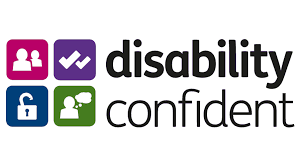Hiring Trends 2025: The Continued Rise of the Contingent Workforce
Navigating the Future of Work
As we step into 2025, the landscape of recruitment and talent acquisition is undergoing a significant transformation. One of the most prominent trends emerging is the increasing reliance on contingent workforce solutions. This shift away from traditional permanent hiring models is driven by a multitude of factors, including economic uncertainty, evolving business needs, and a desire for greater flexibility.
Why Contingent Workforce Solutions?
- Economic Uncertainty: In times of economic instability, businesses often opt for a more flexible workforce. Contingent workers provide a cost-effective solution, allowing companies to scale up or down operations as needed without the long-term commitment of permanent hires.
- Rapid Business Growth: For businesses experiencing rapid growth, contingent workers offer a quick and efficient way to fill talent gaps and meet increased demand. This flexibility enables companies to respond swiftly to market opportunities.
- Specialized Skill Sets: In today's highly specialized job market, finding and retaining top talent with specific skills can be challenging. Contingent workers, such as independent contractors and freelancers, offer access to a diverse pool of talent with specialized expertise.
- Project-Based Work: Many projects have a defined start and end date. Engaging contingent workers for specific projects aligns with these timelines and avoids the overhead costs associated with permanent hires.
The Benefits for Businesses
- Cost-Effectiveness: Reduced overhead costs, such as benefits and payroll taxes.
- Flexibility: The ability to scale the workforce up or down as needed.
- Access to Specialized Talent: Access to a wider pool of talent with specific skills and expertise.
- Reduced Administrative Burden: Simplified hiring and onboarding processes.
The Benefits for Workers
- Flexibility: The freedom to choose projects and clients that align with their skills and interests.
- Higher Earnings Potential: The opportunity to earn competitive rates and take on multiple projects.
- Career Growth: The chance to gain new skills and experiences and build a strong professional network.
The Future of Work
As we move forward, it's clear that the contingent workforce will continue to play a significant role in the future of work. By embracing this trend, businesses can gain a competitive edge, improve operational efficiency, and attract top talent.
MarkJames is committed to helping businesses navigate this evolving landscape. Our experienced recruitment consultants can assist you in developing effective contingent workforce strategies to meet your unique needs.
Contact us today or to learn more visit https://www.markjamessearch.com/contingent-workforce
Chris Reile
Operations Director
chris.reile@markjamessearch.com





